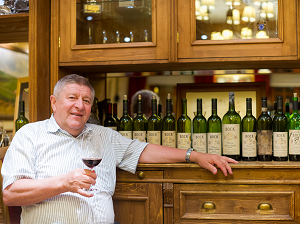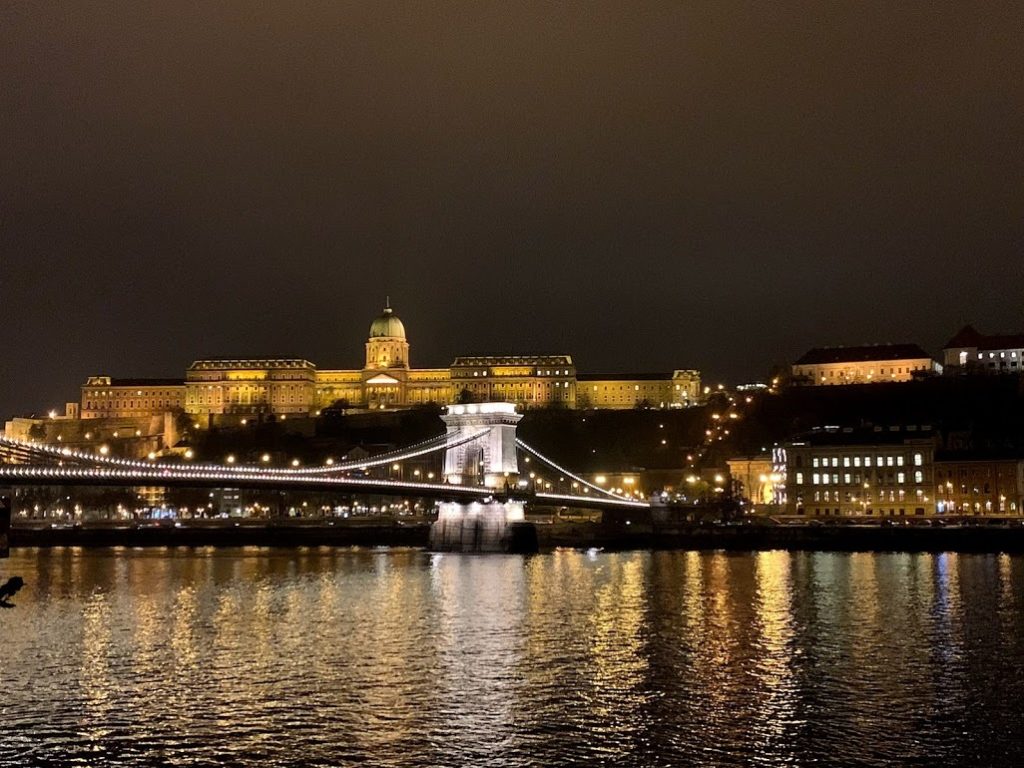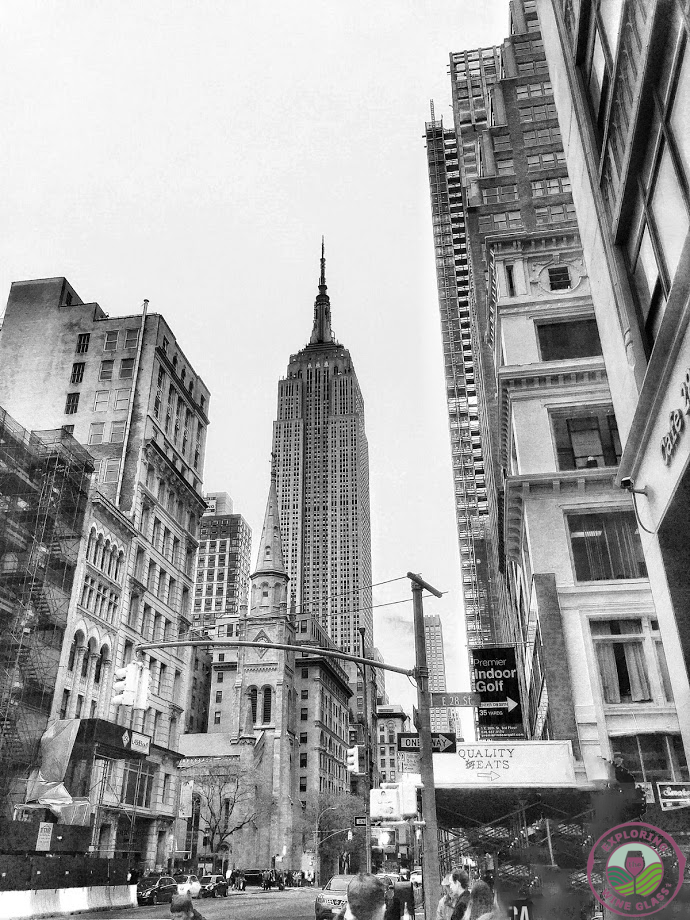*This started off being a single post, however, as I got into writing it… I realized I had too much to say to put it into one post. This first post focuses on Hungarian history and it’s not so distant Communistic control.
Mike and I recently returned from Villány as guests of the Franc & Franc Symposium. I’m not going to lie and say I had previously been well informed on Hungary or its wine regions. In fact, I had never had a Cabernet Franc from Villány and honestly, the first time I heard of the wine region was during last year’s promotion of #CabFrancDay.
But as with everything in my life, I don’t approach anything halfheartedly. (I’m a Sagittarius it’s in our DNA to jump with both feet and worry where we land later.) I began doing research on the country, the region and its wines, but textbook online research does not prepare you for in person experiences. This personal account has marked my soul and will stay with me forever.
Hungary is a landlocked country located in Central Europe. We were lucky enough to extend our stay and spend some time in its capital, Budapest. Even though it rained every day…. I mean EVERY day, we were blown away by its beauty and its uniqueness. The city of Budapest is actually separated by the Danube River and the 19th-century Chain Bridge. On the Buda side, you can’t miss the medieval Castle Hill, while on the other side, Pest, boasts grand neoclassical buildings along Andrássy Avenue.
Thrown into History
On the morning of October 23rd, it seemed like it would be a day like any other, however it would not. On this day there would be country-wide blood-shed. I am horrified by the fact that I had never heard of the significance of this day before. What was I learning in high school? I know I had European History! I can still close my eyes and see my teacher standing in front of the classroom and speaking. Blah, blah, blah! I’m positive that this was not discussed, because I was so affected by this, and the fact that it was in such recent history, that it would have stayed with me. But instead of knowing about the significance of this day and looking to learn more, Mike and I accidentally happened upon the museum and I was brought to tears as we walked through.
On this day, in 1956, one of the biggest mass murders in Europe in the second half of the 20th century took place on Kossuth Square, located in front of the Hungarian Parliament building. Locally known as Bloody Thursday, a crowd of unarmed men, women and children, as well as students were fired upon by Soviet soldiers. The organised demonstration in front of the Parliament was highlighted by leadership carrying Hungarian flags without the coat of arms.
At the front of the square, there was a tank. As historians proclaim, the Soviet tank crew was fraternizing with the public. We saw photos and videos of people climbing and sitting on the tank. We listened as one survivor, a reporter, told his story of how he and a colleague playfully argued who would get to climb the tank while the other took a photo. Only to then have to see his colleague killed on the spot.
The Soviet tanks created a false sense of security since it had appeared they switch sides, but they were active participants in the provocation. Although it has been discovered that some leaders knew in advance that this catastrophe was going to happen; they unsuccessfully attempted to prevent the crowd from going to the square. In the end, it is estimated that there were 8,00-10,00 people in the crowd on this day. First hand accounts claim that the national anthem was sung, and there was comradery between the crowd and the Soviet armored vehicles. But in an instant, that all changed. From different places and buildings around the square the crowd was fired upon from tanks, machine-guns, and hand weapons. After an hour and half of fire, what was left was 1,000 innocent lives lost.
It is debated where all the shots came from. Some researchers talk about the assault from tanks while others discuss that there was gun fire from the surrounding buildings. Ultimately, in 1991, it was declared by the Justice Reparations Commission that both occurred and that the Russians and Hungarians were equally held responsible. Although there was no hard evidence, survivors of the day helped to provide the picture. The crowd occupied a number of points of Kossuth Square and when combining their stories the story becomes a reality. Survivors understandably vividly remember the directions from which they were being shot at. Those in front of the Parliament were mainly aware of shots coming from the Ministry of Defense and those at the Rákóczi statue of shots  from Rákóczi statue of shots from the Soviet tanks. It has been speculated that shots were fired atop the Ministry of Defense, the Ministry of Housing and Public Construction, and the building of the Parliament cafeteria. But what can not be denied or ignored as evidence is the bullet-holes, still visible today, on the buildings of Kossuth Square and the Parliament. These relics of that day, which Mike and I saw and felt for ourselves, gave me chills, broke my heart and brought tears to my eyes.
from Rákóczi statue of shots from the Soviet tanks. It has been speculated that shots were fired atop the Ministry of Defense, the Ministry of Housing and Public Construction, and the building of the Parliament cafeteria. But what can not be denied or ignored as evidence is the bullet-holes, still visible today, on the buildings of Kossuth Square and the Parliament. These relics of that day, which Mike and I saw and felt for ourselves, gave me chills, broke my heart and brought tears to my eyes.
Bringing History to a Reality
After our week in Budapest, Mike and I met our driver who was to take us to Villany. Villany is about a two hour drive from Budapest. Although the car was extremely comfortable, This was our first experience with auto-drive on a car! Mike and I were amazed at how the driver did not need to have any hands on the steering wheel and after the initial shock (and scare) we relaxed and enjoyed the ride. But I must admit that I do not see this as a positive. I think it just aids in the thought that you can text, talk or do anything else you want instead of paying attention. (There’s my PSA for the day)
Upon arriving in Villány, we checked into our hotel, which was more of a suite at the private residence of the host winery, Bock. The Bock settled in Villany in the 18th century and has been producing wine for the past nine generations. On our final night in Villány, we were treated to a multicourse meal hosted by József Bock. To say that he is energetic and passionate is an understatement. I was completely enthralled when he spoke. Luckily, we had someone translating for us, but I didn’t want to miss a word, so I pulled out my phone and opened Google Translate and set it to “listen.” (as a sidebar, if you travel internationally, Google Translate is the best thing EVER! I use it all the time!)

Although József was born in Hungary, he told the story of how his family emigrated from Germany. He spoke of how his family was considered well off and when Hungary became Nationalized the authorities took everything from his family. He told stories of how he had to sneak out of his house and hide because he was considered a German even though he was born in Hungary.
In 1958, his father bought back a half hectare of land that they originally owned. Yes, you read that right… bought back land that was originally theirs since the 1850s but was just taken from them in 1946!!!!
On this land, he began planting vines to produce extra income for his family. Over the years, he purchased more and more land one half hectare at a time. Today, he owns 70 hectares and sources from another 70 hectares. He has never looked back, his passion pushes him forward. In addition to the vineyards, Bock Winery includes a restaurant and a four star hotel.
As I listened, I found myself inching closer and closer to the edge of my seat. I was completely entranced and was waiting on bated breath to hear what else he had to say. To know what he and his family went through and to see his success is inspiring. I didn’t want him to stop talking, to stop sharing… but the wine was opened and the food was placed on the table. The story telling may have ended, but my outlook on world history and my appreciation for passion was changed forever.
~Slainte!
*in the next installment of Are You Hungary for Wine I will focus on Villány and its wine.


What a great experience! And, loved the history lesson (I would’ve been emotional too)…
Thanks Misty. Words are tough to describe the emotion while hearing the stories. We live such a sheltered life here.
Looking forward to Part 2. Hungary is a fascinating county with a long and complex history. It is sad, and hard to believe, they are once again moving toward an autocratic government. History repeating itself!
We have a day in Budapest in April. I wish it were longer but I am looking forward to it. We have booked an awesome tour guide to take us through the city so we don’t miss a thing.
Oh! It is incredible. There is really so much to see. Smart to get a guide so you can see as much as possible in a short time. And yes, sad to see that history may repeat itself.
Very interesting, Lori. Looking forward to continuation.
THank you Anatoli. I don’t ever recall being so taken by history. This is the first time I have experienced something like this. Reading it, even seeing movies/video, does not equate to listening to the stories being told first hand from those who experienced it.